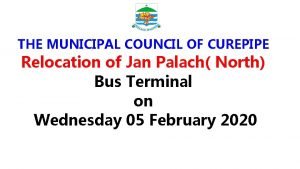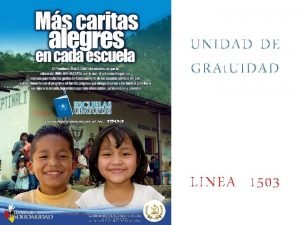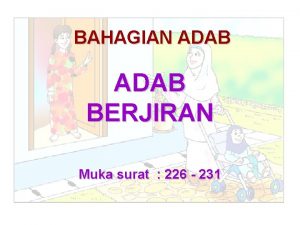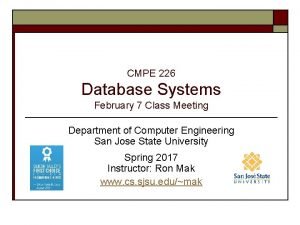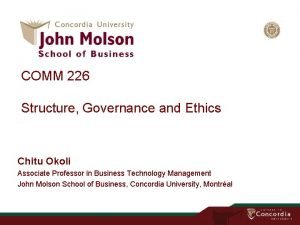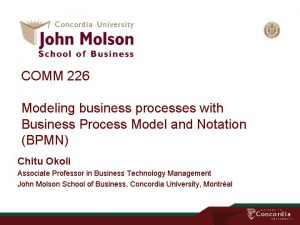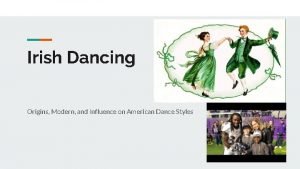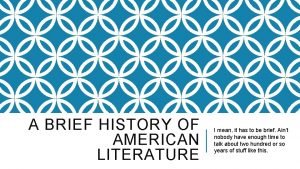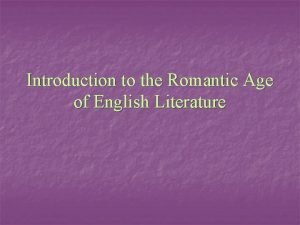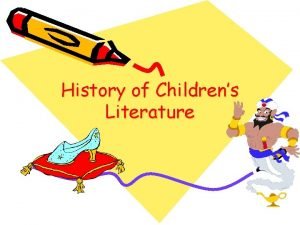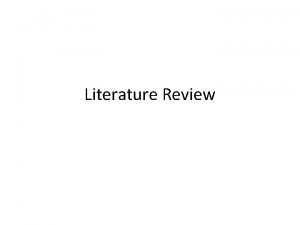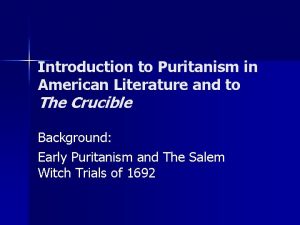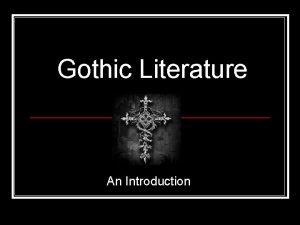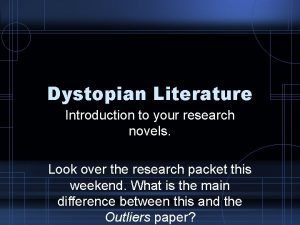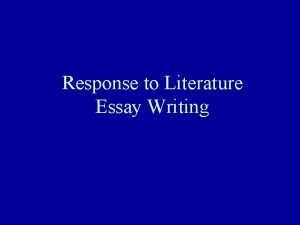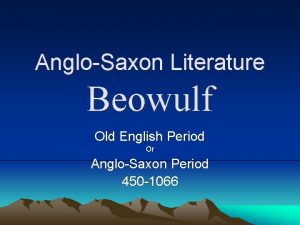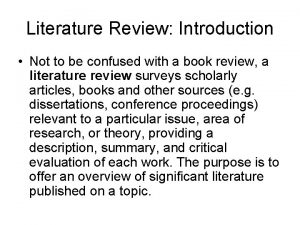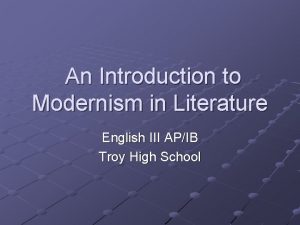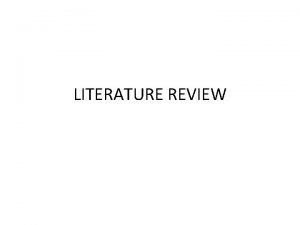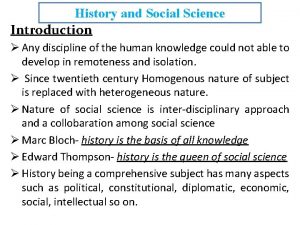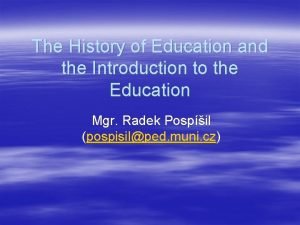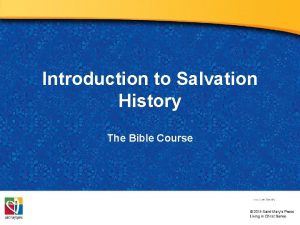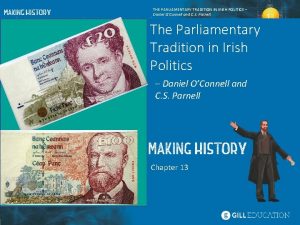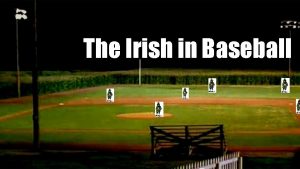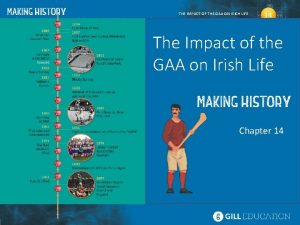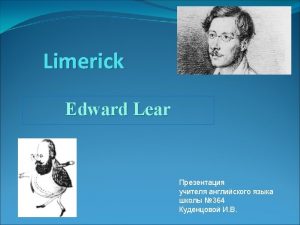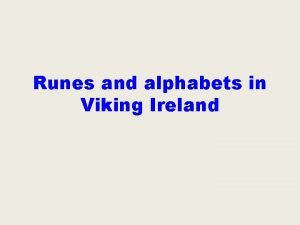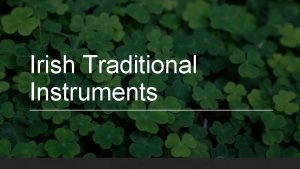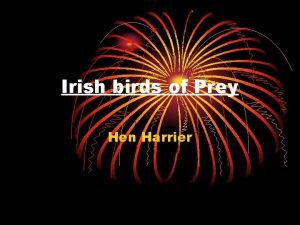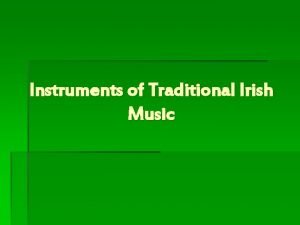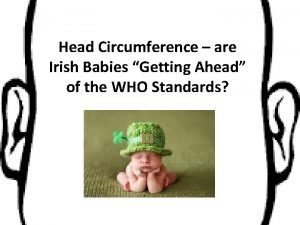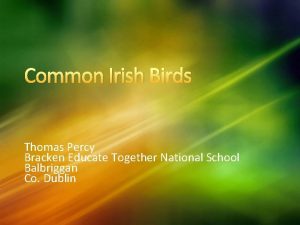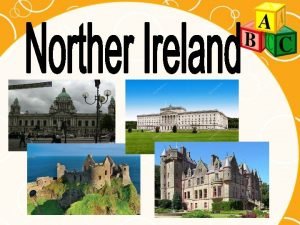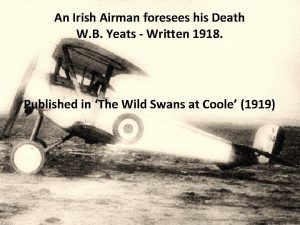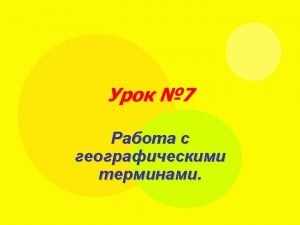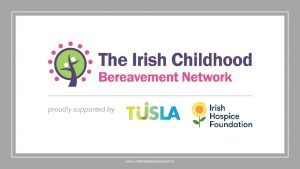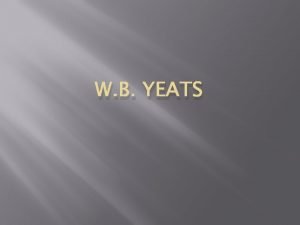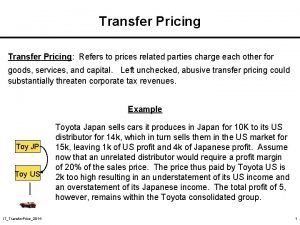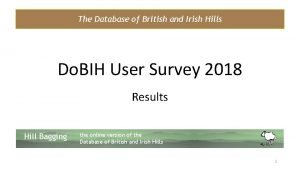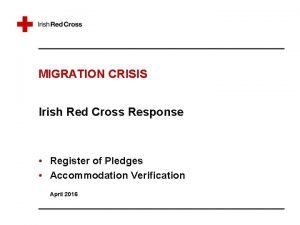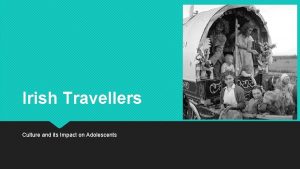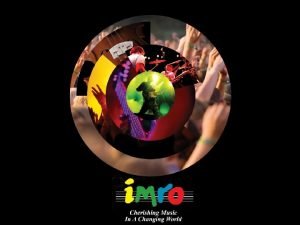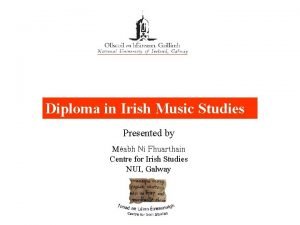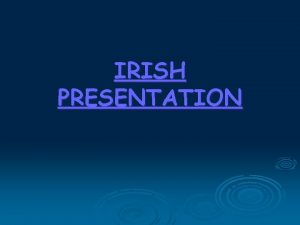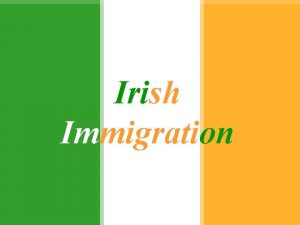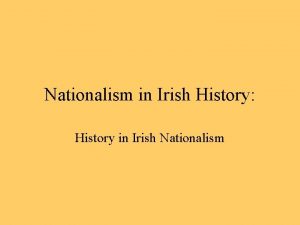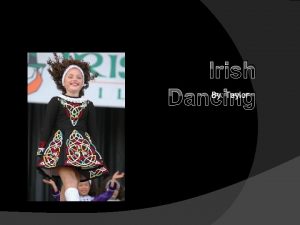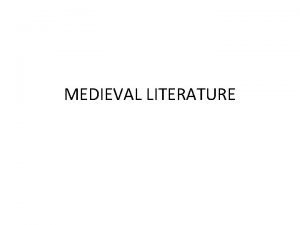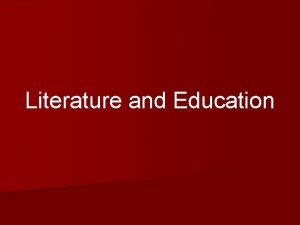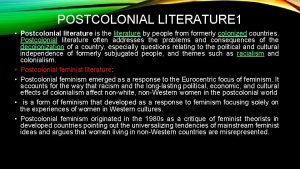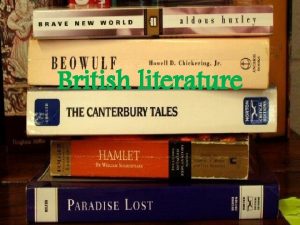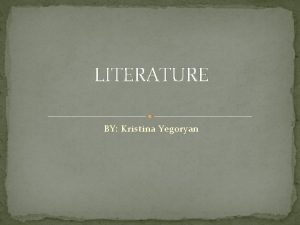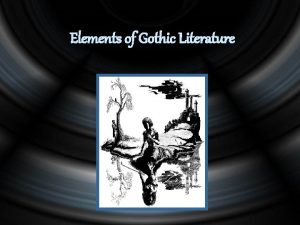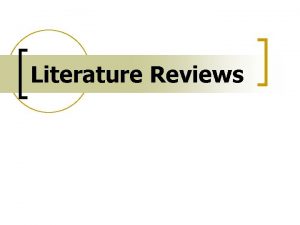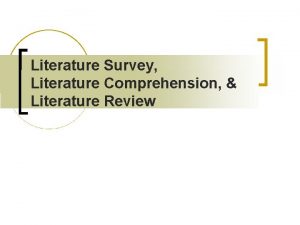IRISH 226 IRISH LITERATURE Introduction to Irish History



















































- Slides: 51

IRISH 226: IRISH LITERATURE Introduction to Irish History John Rickard Bucknell University

Irish Geography Ireland is an island located at the far Western edge of Europe in the Atlantic Ocean

Map of Ireland Lying to the West of England, Ireland is composed of four provinces and 32 counties

Northern Ireland While 26 of the 32 counties of Ireland comprise the independent Republic of Ireland, six northern counties are still part of the United Kingdom

Population of the Republic of Ireland Irish population = approximately 4 million 25% are under the age of 30 About 14% now new immigrants (as of the last 5 -8 years) Centuries of emigration (late 18 th – 1970 s) have resulted in an Irish population dispersed around the English-speaking world (the “Irish Diaspora”) Status as a “new nation” has made the Irish very conscious of a distinctive identity

Prehistoric Ireland Many prehistoric monuments, including ring forts, burial mounds, and dolmens such as this one in Sligo, are evidence of pre-Celtic history in Ireland

Newgrange--A Prehistoric Passage Tomb



First light at the winter solstice




The Celts Historians speculate that the Celts may have arrived in Ireland as early as 400 B. C. The Celts brought Iron Age technology and European Celtic artistic styles (known as La Tène style) with them.

The Tara Brooch

Gold Boat, Early Iron Age

Celtic Culture Much of what we know about the Celts is speculation based on slim historical evidence. Many historians, however, believe that women held unusually high status in Celtic culture.

Celtic Myth and Folklore Fantastic heroic tales and myths from Irish Celtic culture were transcribed by Christian monks in the centuries following the apparently peaceful Christianization of Ireland (supposed to have been brought about by St. Patrick in 432 A. D. ). Among the most famous human heroes were Finn Mac. Cumhail and Cuchulain.

Tain bo Cualigne The Tain bo Cualigne, or Cattle Raid of Cooley, tells the story of Queen Medbh’s raid on Ulster. Seeking the Brown Bull of Cooley, she attacked while all the men of Ulster but one were incapacitated by labor pains. Cuchulain, who was exempt from this curse, defended Ulster against the “Men of Ireland. ”


Cuchulain and the Men of Ulster




Cuchulain as Political Icon The Celtic myths retain a cultural potency in Ireland, where Cuchulain, for example, serves as a symbol of heroism and defiance for Nationalists and Loyalists.

Loyalist Wall-Mural

Cuchulain as Marketing Tool

Celtic Christianity thrived in Ireland produced artistic masterpieces such as the 8 th century Book of Kells.



The Armagh Chalice

Viking Raids and Settlements, 793 -1014

Norman Arrival and Settlement (Marriage of Aoife & Strongbow; romanticized version by Daniel Maclise, 1854)

Clash of Cultures (Anglo-Norman vs. native Irish)

Stereotypes of the Irish Irish-speaking vs. English-speaking Illiterate (an oral culture) vs. literate Therefore, primitive vs. civilized Tribal vs. national Musical dancing (performers) musicians (harper) Feckless (irresponsible, carefree, drunken) vs. practical, responsible, reliable.

Turlough O’Neill submits to Sir Henry Sidney (circa 1567)

The Protestant Ascendancy Plantations, war, emigration and Penal Laws helped to effect a gradual transfer of land from Catholic to Protestant hands between 1641 and 1703, as these maps show.

English Woodcut of Irish Atrocities, 1798

Death of Lord Edward Fitzgerald, 1798

English caricature of Irish rebels

Catholic Emancipation Daniel O’Connell organized a movement for Catholic emancipation that succeeded in 1829; he then began a movement to repeal the Act of Union, which was brought to a halt by famine in 1845.

The Great Hunger An Gorta Mor, or the Great Hunger, began when the potato crop failed in 1845. For the next few years, a devastating famine followed, reducing the population drastically and changing Irish society forever.

Emigration

Charles Stewart Parnell, the “uncrowned king of Ireland, ” led the Irish parliamentary movement for Home Rule until he was stopped by scandal in 1890. He died soon after, in 1891.

Easter 1916 The Easter Rising in 1916 declared an Irish Republic and led to harsh English reprisals, executions, and finally, a war of independence.

Dublin after the Easter Rising (1916)

War of Independence, 1918 -1921

Treaty and Partition, 1921 -1922 Michael Collins

Civil War, 1922 -1923

Northern Ireland the “Troubles”

Coca-colanization?
 226 curepipe
226 curepipe Acuerdo gubernativo 226-2008
Acuerdo gubernativo 226-2008 Al quran muka surat 226
Al quran muka surat 226 Psy 226
Psy 226 Cmpe226
Cmpe226 Comm 226 quiz
Comm 226 quiz Comm 226
Comm 226 Origin of riverdance
Origin of riverdance Brief history of american literature
Brief history of american literature Introduction of romantic age
Introduction of romantic age History of childrens literature
History of childrens literature History also history physical
History also history physical Difference between literature review and introduction
Difference between literature review and introduction American puritanism literature
American puritanism literature Language meaning in literature
Language meaning in literature Gothicism literary definition
Gothicism literary definition Introduction to dystopian literature
Introduction to dystopian literature Concrete detail examples in literature
Concrete detail examples in literature Anglo saxon literature beowulf
Anglo saxon literature beowulf Introduction of literature
Introduction of literature Literature review introduction
Literature review introduction Introduction to modernism in literature
Introduction to modernism in literature Format of literature review
Format of literature review History in social science discipline
History in social science discipline Introduction to history of education
Introduction to history of education Definition of salvation history
Definition of salvation history Parliamentary tradition meaning
Parliamentary tradition meaning Irish american baseball hall of fame
Irish american baseball hall of fame The impact of the gaa on irish life
The impact of the gaa on irish life Short irish limericks
Short irish limericks Runes
Runes Popular irish instruments
Popular irish instruments What is neo traditional music
What is neo traditional music Irish birds of prey
Irish birds of prey Irish instruments names
Irish instruments names Do irish people have big heads
Do irish people have big heads Don rua
Don rua Northern ireland official languages irish
Northern ireland official languages irish An irish airman foresees his death analysis
An irish airman foresees his death analysis Scottish pussy xxx
Scottish pussy xxx Irish childhood bereavement network
Irish childhood bereavement network Where did most of the irish immigrants settle
Where did most of the irish immigrants settle The wild swans at coole theme
The wild swans at coole theme Irish dutch sandwich
Irish dutch sandwich Database of british and irish hills
Database of british and irish hills Irish red cross register of pledges
Irish red cross register of pledges Irish travellers grabbing
Irish travellers grabbing Irish music rights organisation
Irish music rights organisation Irish music studies
Irish music studies Irish playwright wilde
Irish playwright wilde Old irish fashion
Old irish fashion Myths and legends drawing
Myths and legends drawing
